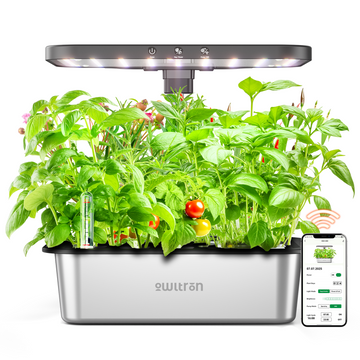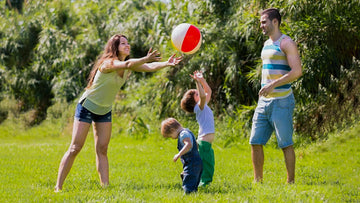Playtime is a magical part of childhood, filled with laughter, imagination, and boundless energy. As parents, we cherish these moments and strive to provide our kids with the best experiences possible. However, while we encourage their playfulness, it is crucial to prioritize their safety as well.
In this blog post, we will explore the world of kid-friendly activities and discover how to create a safe environment for our little ones to enjoy happiness both indoors and outdoors. So, let's embark on this journey together and unlock the secrets to ensuring our children's happiness and well-being during playtime.
Table of contents
Creating a Safe Play Environment
Introducing Indoor/Outdoor Play Activities
Ensuring Safety During Play
Creating a Safe Play Environment
Establishing a secure indoor Environment
Ensuring a safe and secure environment for your children during indoor play is of utmost importance. Here are some crucial steps to keep in mind:
- Removing potential hazards
Begin by eliminating any sharp objects, toxic substances, or small choking hazards within your child's reach. This includes items such as scissors, cleaning supplies, and small toys that could be easily swallowed. Take extra care to secure cleaning supplies, medications, and other potentially harmful substances in locked cabinets.
- Securing furniture and electronics
Children are naturally curious and may inadvertently topple furniture or grab onto unstable electronics. It's important to secure heavy furniture, televisions, and other electronics that could tip over. Ensure that cords are properly managed and out of reach.
- Creating designated play areas
Designate specific areas in your home for playtime and make sure the space is separate from areas with potential hazards, such as the kitchen or stairs. We recommend that parents consider installing a security camera with an area detection function to further enhance the safety of play areas. If your child leaves that designated area, you will receive a notification. This provides an extra layer of security, allowing you to monitor your child's movements and promptly respond if they venture into potentially unsafe areas.
Ensuring Outdoor Safety in the Yard
Outdoor play is an excellent opportunity for kids to explore, but it's essential to ensure their safety in the yard. Here are some measures to consider:
- Checking for hazards
Before your child steps outside, inspect the yard for any hazards such as sharp objects, broken glass, or hazardous substances like pesticides, fertilizers, or cleaning solutions. Remove any potential hazards promptly to create a safer environment for play.
- Securing fences and gates
To prevent your child from wandering into unsafe areas or accessing the road, ensure that your fences and gates are secure. Regularly inspect them for any loose parts or gaps that need attention.

- Providing sun protection
When enjoying outdoor play, protect your child's delicate skin from harmful UV rays. Make sure they wear a hat and apply sunscreen with a high SPF. Additionally, consider providing shaded areas or using sun umbrellas to minimize exposure to direct sunlight.
Promoting Hygiene and Cleanliness
Maintaining proper hygiene practices is crucial for your child's overall well-being, especially during playtime. Here's how you can promote cleanliness:
- Encouraging regular handwashing
Make it a habit for your child to wash their hands before and after playtime. Teach them proper hand washing techniques, including scrubbing for at least 20 seconds with soap and warm water.

- Keeping play areas clean and sanitized
Regularly clean toys, play surfaces, and high-touch areas using child-safe disinfectants. Consider incorporating this into your daily routine to ensure a healthy environment for play.
Introducing Indoor/Outdoor Play Activities
Indoor Play Ideas
When the weather isn't suitable for outdoor play or when you're looking for some fun and educational activities for your little ones, engaging in indoor play can be a great option. Here are a few exciting ideas to keep your kids entertained and stimulated:
- Sensory Bins(Ages 1-3): Create a sensory bin filled with materials like rice, beans, or water. Add scoops, funnels, and toys for children to explore different textures and engage their senses.
- Indoor Obstacle Course(Ages 3 and above): Set up a DIY obstacle course using household items like pillows, cushions, hula hoops, and tunnels. Design a course that includes crawling, jumping, balancing, and other physical activities to keep kids active and engaged.
- Yoga or Dance Sessions (Ages 5 and above): Engage kids in yoga or dance sessions to promote physical fitness and mindfulness.
- DIY Science Experiments(Ages 4-6): Conduct simple science experiments at home, such as making a volcano erupt with baking soda and vinegar or creating a homemade lava lamp using oil, water, and food coloring.
- Indoor Treasure Hunt(Ages 7-9): Set up a treasure hunt by hiding clues or objects around the house. Provide written or visual hints to guide the children through the hunt and encourage problem-solving skills.
- Bake and Decorate(Ages 8 and above): Involve kids in cooking or baking activities. Let them help with measuring ingredients, mixing, and decorating. Choose simple recipes suitable for their age and supervise them throughout the process.

Outdoor Play Ideas in the Yard
Playing outside offers numerous benefits for children, including fresh air, physical activity, and an opportunity to connect with nature. Here are some enjoyable activities you can organize in your yard to keep your little ones entertained:
- Nature Scavenger Hunt(Ages 4-6): Prepare for a nature scavenger hunt by creating a list of items for kids to find in the backyard or nearby nature area.
- Gardening (Ages 7-12): Engage kids in gardening by helping them plant seeds or care for existing plants. Teach them about different plants, watering techniques, and the importance of nurturing living things. Provide kids with child-sized gardening tools, gloves, and a watering can. Help them choose plants that are easy to grow and maintain, such as herbs, flowers, or vegetables.
- Bird watching (Ages 8-12): Set up a bird feeder or birdhouse in your backyard and spend time observing and identifying different bird species. Provide kids with a bird identification guide and binoculars for a more immersive experience.
- Nature Photography (Ages 10-14): Introduce kids to the art of photography by giving them a camera or a smartphone with a good camera. Encourage them to capture the beauty of nature in your backyard or local park.
Ensuring Safety During Play
As we continue our exploration of fun and engaging play activities for kids, we cannot overlook the significance of creating a secure environment for their playtime adventures. By implementing proper supervision, setting rules, utilizing technology, being prepared for emergencies, and taking preventive steps, we can provide our children with the freedom to play and explore while giving us peace of mind.
Implementing Appropriate Supervision
One of the fundamental aspects of ensuring our children's safety during play is providing adequate supervision. Supervision is not about hovering over your child but being actively involved and aware of their play activities.
Setting Rules and Boundaries
Establishing clear rules and guidelines for safe play is crucial. Teach them about the importance of following these rules and respecting boundaries to ensure a secure play environment. This includes teaching them about treating others with kindness and respect, and practicing open communication. Encourage them to voice any concerns or questions they may have during playtime.
Utilizing Security Cameras
Consider installing indoor and outdoor cameras as an additional safety measure. They can provide parents with peace of mind by allowing them to keep an eye on their children while they play. Opt for camera systems with remote access and monitoring features, so you can easily check on your child's activities from anywhere. When choosing a camera system, look for key features like high-quality video, motion detection capabilities, and night vision. Remember to place the cameras strategically to ensure optimal coverage while respecting your child's privacy.
First Aid and Emergency Preparedness
Being prepared for emergencies is crucial for every parent. Here are some specific steps you can take to ensure you're ready to handle any unforeseen incidents during your child's playtime:
- Familiarize Yourself with Basic First Aid Techniques: Educate yourself on basic first aid techniquesthat are relevant to common childhood injuries. This includes knowledge of how to treat minor cuts, burns, bruises, sprains, and insect bites.
- Keep a Well-Stocked First Aid KitEasily Accessible: Prepare a well-stocked first aid kit and keep it readily available in a designated area of your home, easily accessible during playtime. Make sure your kit includes essentials such as adhesive bandages, sterile gauze pads, adhesive tape, antiseptic solution, tweezers, scissors, disposable gloves, and a digital thermometer. Regularly check and replenish the supplies to ensure they are up-to-date and in good condition.
- Know Emergency Contact Numbers and Procedures: Keep a list of emergency contact numbers, including local emergency services, your child's pediatrician, poison control, and any other relevant emergency contacts.
- Stay Calm and Act Swiftly: In the event of an emergency, it's crucial to remain calm and act swiftly. Being able to remain calm and make quick decisions can significantly affect the result during an emergency.
Preventing Bug Bites
Outdoor play brings the joy of exploration, but it also exposes children to potential bug bites. Protect your child by taking necessary precautions.
Use child-safe insect repellents with appropriate ingredients and apply them according to the instructions.
Dress your child in light-colored, long-sleeved clothing to minimize exposed skin.
Create a bug-free environment in your yard by removing standing water and maintaining a tidy space.
Consider using citronella candles or torches to repel insects during outdoor activities.
Conclusion
As parents, our primary concern is the safety and well-being of our children. By prioritizing safety in a thoughtful and proactive manner such as creating a safe play environment, and installing indoor and outdoor security cameras in play areas, we can create a nurturing space for our children to learn, develop, and thrive.






